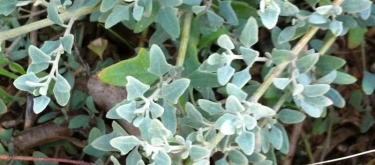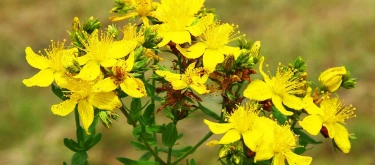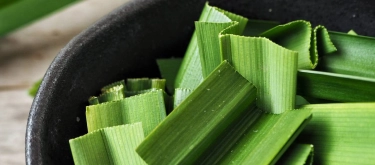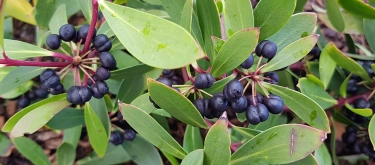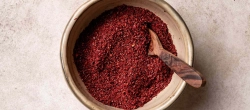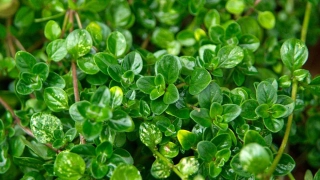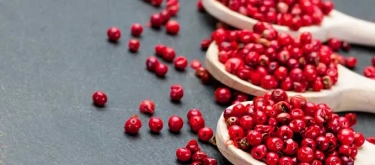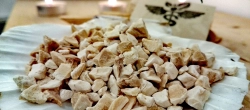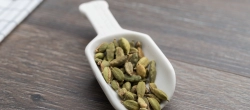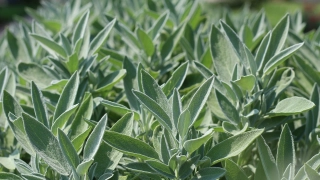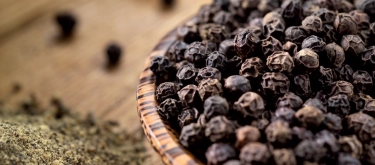Wild Rosella: Taste Profile, Aroma, Benefits and Health Risks
Wild rosella (Hibiscus sabdariffa), also known as native hibiscus, is a vibrant red flower found in northern parts of Australia, particularly Queensland and the Northern Territory. It has long been used in Indigenous Australian cuisine and medicine. Known for its tart, cranberry-like flavor, wild rosella is popular in syrups, jams, teas, and desserts.
Wild rosella is generally safe for consumption in moderate culinary amounts. In concentrated form (e.g., extracts or supplements), it may mildly lower blood pressure. Caution is advised for individuals on antihypertensive medications or during pregnancy.
What does Wild Rosella taste like?
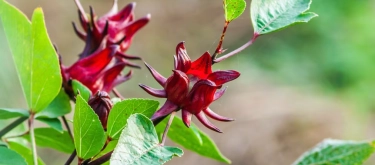
Complete Sensory Description:
The taste of wild rosella is distinctly tart and fruity, resembling a fusion of cranberry, rhubarb, and raspberry, with a slight floral undertone. The sourness is bright but clean, making it ideal for both sweet and savory applications. The aroma is floral and slightly citrusy, with notes of hibiscus tea and rose petals. When fresh or rehydrated, the texture is soft and fleshy with a pleasant chew. Visually, wild rosella calyces are deep crimson with a slightly wrinkled, fleshy appearance.
In-depth Flavor Analysis:
The intense tartness of wild rosella comes from organic acids, primarily hibiscus acid (hibiscic acid), malic acid, and citric acid. These compounds stimulate salivary glands and enhance perception of freshness. Anthocyanins, which give the flower its deep red pigment, also contribute subtle astringency and antioxidant activity. The floral top notes arise from aromatic esters and terpenes released during heat processing. Cooking enhances fruitiness while softening the sharp acidic bite.
Flavour Variations Depending on Preparation and Maturity:
-
Fresh raw calyces: Bright, sour, and refreshing — excellent in salads or cold beverages.
-
Dried and brewed (as tea): Earthier, slightly floral, and more mellow with a deep ruby hue.
-
Cooked (jams, syrups): The tartness mellows, and the flavor deepens into a berry-rhubarb richness with a slightly spiced edge.
-
Fermented (e.g., wild rosella kombucha): Gains complexity, with vinegar-like acidity, fruity depth, and subtle floral bitterness.
Varieties and Culinary Applications:
While Hibiscus sabdariffa is the most widely used, native rosella varieties in Australia may exhibit subtle differences in flavor intensity and pigmentation. Wild rosella is versatile: used in sauces, relishes, compotes, jams, cordials, iced teas, cocktails, syrups, and even glazes for meats. Chefs value it for its vibrant color and tangy balance in dishes.
Selection and Storage:
Choose fresh calyces that are firm, brightly colored, and unbruised. Store fresh rosella in the refrigerator in a breathable container for up to one week. Dried rosella should be kept in airtight containers away from light and humidity and can last for up to a year.
Nutritional Insights:
Wild rosella is rich in vitamin C, anthocyanins, and other antioxidants. It may support immune health, reduce oxidative stress, and aid in mild blood pressure regulation. It also contains trace amounts of calcium, magnesium, and potassium.
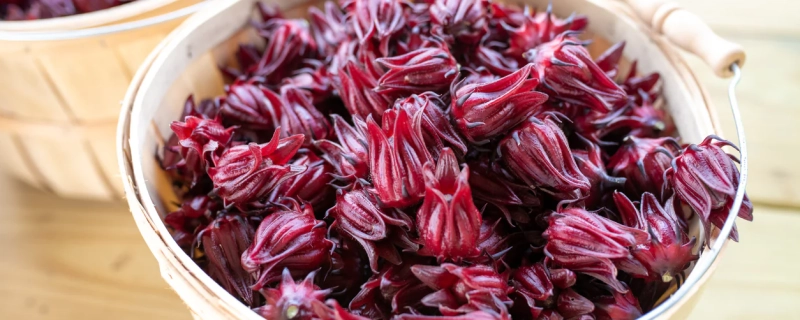
Expert Insights & Culinary Tips:
-
Combine with sugar and ginger to make flavorful jam or syrup.
-
Use in place of cranberry in sauces for game meats.
-
Infuse in vinegar or spirits for unique floral acidity.
-
Brew with lemongrass or mint for a refreshing cold drink.
Interesting and Curious Facts:
-
Wild rosella has been used in traditional Indigenous medicine to soothe coughs and boost vitality.
-
Its name comes from the calyx, the outer layer that protects the flower, which is the edible part used in cooking.
-
In global cuisine, rosella is also known as sorrel (Caribbean), flor de Jamaica (Mexico), and karkadeh (Middle East).
Harm and Dietary Considerations:
In large quantities, rosella’s acidity may irritate sensitive stomachs. Its mild hypotensive effect may interact with blood pressure medications. Due to lack of safety data, concentrated forms should be avoided during pregnancy unless approved by a healthcare professional.
Religious Dietary Considerations:
Wild rosella is plant-based and accepted in all major religious dietary practices, including Halal, Kosher, and vegan diets.
Phytochemical Composition & Functional Properties:
Wild rosella is rich in anthocyanins (notably delphinidin and cyanidin derivatives), flavonoids, and phenolic acids. These compounds contribute to its antioxidant activity, anti-inflammatory potential, and possible cardiovascular support. The high polyphenol content also plays a role in immune modulation and cellular protection from oxidative stress.
Interactions with Other Flavors (Flavor Pairing Science):
Wild rosella pairs exceptionally well with ginger, citrus (lime, blood orange), vanilla, mint, and tropical fruits like mango and pineapple. These combinations work due to overlapping aromatic compounds such as geraniol and linalool. Its tartness also contrasts well with fat-rich elements like coconut cream and creamy cheeses.
Cultural & Regional Uses Around the World:
In Egypt and Sudan, it is used to brew karkadeh, a traditional hibiscus tea served hot or cold. In Mexico and Central America, it appears as flor de Jamaica in agua fresca. Caribbean cultures use it during festive seasons in sorrel drinks. In Australia, Indigenous communities value it both nutritionally and spiritually as part of bush tucker.
Visual & Aesthetic Culinary Use:
Its deep red hue, derived from stable anthocyanin pigments, makes wild rosella a popular natural colorant in syrups, glazes, and desserts. Chefs use it to create visually dramatic sauces, jewel-toned jellies, and garnishes that enhance both color and perceived freshness.
Final Thoughts & Sensory Journey:
Wild rosella is a culinary gem of Australian bushfoods — vivid, sharp, and versatile. Its ruby red calyces bring color and zest to both contemporary dishes and traditional preparations. With layers of tartness, florality, and functional nutrition, it offers a bold yet elegant sensory experience.
Resources:
-
Australian Native Food Harvest by Julie Weatherhead (2015). ISBN: 9780646930093
-
The Bushfood Handbook by Vic Cherikoff (1998). ISBN: 9780646343046
-
Indigenous Plant Use (Queensland Government Factsheet). ISBN: N/A
-
Handbook of Herbs and Spices, Volume 2 by K. V. Peter (2004). ISBN: 9781855737213
